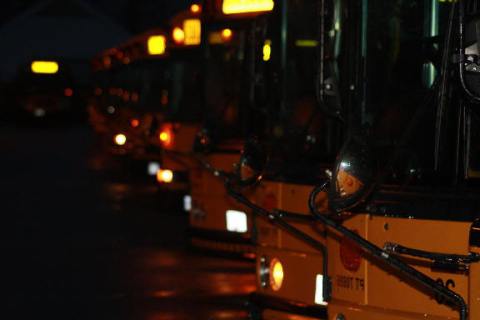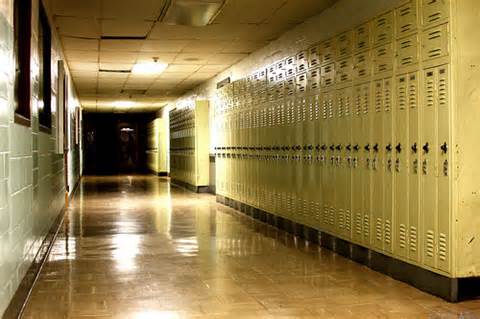Introduction: The Timing of Education
 In the early 1990s, researchers from Brown University (1) and the University of São Paulo (1.5) found initial evidence that circadian biology drives the delayed sleep-wake patterns of adolescents. (1, 1.5) Subsequent studies have confirmed puberty’s onset marks the beginning of a phase shift, with adolescents going to bed later and rising later than younger children. (2, 2.5, 3, 4) Typically adolescents are unable to fall asleep at earlier times and sleep in later to get the sleep they need, (2, 3, 5, 6, 7, 8, 9) now believed to be generally 8-11 hours, depending on age. (9.5, 9.7)
In the early 1990s, researchers from Brown University (1) and the University of São Paulo (1.5) found initial evidence that circadian biology drives the delayed sleep-wake patterns of adolescents. (1, 1.5) Subsequent studies have confirmed puberty’s onset marks the beginning of a phase shift, with adolescents going to bed later and rising later than younger children. (2, 2.5, 3, 4) Typically adolescents are unable to fall asleep at earlier times and sleep in later to get the sleep they need, (2, 3, 5, 6, 7, 8, 9) now believed to be generally 8-11 hours, depending on age. (9.5, 9.7)
On April 4, 1994, physicians began advising school leaders to “eliminate early starting hours for teenagers.” (10) Sleep experts urge a delay in morning classes until 8:30 a.m., or later, for middle (2, 13) and high school students. (2, 11, 12, 14, 15) Many preeminent scientists propose much later starting hours for older teens since the magnitude of the phase delay and the hours of sleep lost increase as children progress through adolescence. (See, e.g., Appen. C, infra.) Most administrators instead adhere to school schedules described by physicians and scientists as “toxic,” (15.5) “abusive,” (16) “nonsense,” (17) “deleterious,” (18) ”cruel,” (19) and “nuts.” (20)
 More than 85 percent of public junior and senior high schools in the United States begin morning classes before 8:30 a.m., (20.5) with nearly 43 percent starting during the 7 o’clock hour, (20.5) while melatonin still pressures adolescents to sleep. (2, 3, 12, 21, 22, 24) The vast majority of teenagers attending early starting schools meet the morning bell in a sleep-deprived state. (2, 6, 8, 12, 23, 25, 26, 27, 28, 29, 30, 31, 32, 33, 34, 35, 36, 37, 38, 39) “The consequences of this sleep deprivation are severe, impacting adolescents’ physical and mental health, as well as daytime functioning.” (40)
More than 85 percent of public junior and senior high schools in the United States begin morning classes before 8:30 a.m., (20.5) with nearly 43 percent starting during the 7 o’clock hour, (20.5) while melatonin still pressures adolescents to sleep. (2, 3, 12, 21, 22, 24) The vast majority of teenagers attending early starting schools meet the morning bell in a sleep-deprived state. (2, 6, 8, 12, 23, 25, 26, 27, 28, 29, 30, 31, 32, 33, 34, 35, 36, 37, 38, 39) “The consequences of this sleep deprivation are severe, impacting adolescents’ physical and mental health, as well as daytime functioning.” (40)
Students at later starting schools get more sleep, (4, 13, 30, 37, 41, 42, 43, 43.5) perform better academically, (13, 24, 37, 44, 45) have significantly fewer automobile accidents (31, 46) (the leading cause of death among older teens), (46.5) report greater motivation (41) and less depression, (3, 37, 41, 47) experience fewer physical health difficulties, (37, 41) are less likely to be tardy or truant, (2, 30, 41, 43.5, 44, 47, 48, 48.5) and more likely to graduate, (48.7) demonstrate “better performance in attention level, impulsivity, and rate of performance[,]” (13) and, according to Brookings Institute economists, will measurably improve fiscal prospects for themselves (with effects for disadvantaged students roughly twice as large), and for their communities, where middle and high school classes delay from “roughly 8 a.m. to 9 a.m.” (49, pp. 5-11, 21, n. 7.) RAND Corporation economists estimate that delaying school start times to 8:30 a.m. or later in 47 states would add about $9.3 billion annually to the U.S. economy. (50)
(3, 37, 41, 47) experience fewer physical health difficulties, (37, 41) are less likely to be tardy or truant, (2, 30, 41, 43.5, 44, 47, 48, 48.5) and more likely to graduate, (48.7) demonstrate “better performance in attention level, impulsivity, and rate of performance[,]” (13) and, according to Brookings Institute economists, will measurably improve fiscal prospects for themselves (with effects for disadvantaged students roughly twice as large), and for their communities, where middle and high school classes delay from “roughly 8 a.m. to 9 a.m.” (49, pp. 5-11, 21, n. 7.) RAND Corporation economists estimate that delaying school start times to 8:30 a.m. or later in 47 states would add about $9.3 billion annually to the U.S. economy. (50)
State policymakers may eventually decide when the school day begins (51) as they have in California. (51.6, 51.7) Until then, at least during the school year, adolescent sleep sufficiency, a point of concern among venerated health, science, and education agencies, (26, 52, 52.3, 52.7, 53, 53.5, 53.7, 53.9, 54, 54.3, 54.5, 54.7, 54.8, 54.9, 55, 55.2, 55.4, 56, 57, 57.5) will substantially be determined by the whims of local school boards. (58) 
To the extent it may be said that there is a “debate” concerning school start times, science favors only one side of the argument. (1, 2, 3, 4, 6, 7, 8, 9, 10, 11, 12, 13, 14, 15, 16, 17, 18, 19, 20, 21, 22, 23, 24, 26, 27, 28, 29, 30, 31, 32, 33, 34, 35, 36, 37, 38, 39, 40, 41, 42, 43, 44, 45, 46, 47, 48, 49, 52, 52.3, 52.7, 53, 54, 55, 55.2, 55.4) The other side is governed by unawareness (59) and adult convenience, (60) busing, athletics, (12) daycare, (61, 63) teachers’ unions, (62.5) and politics, (58) rather than education or the needs of children. (62, 63, 64, 65, 67)
Later secondary school scheduling is endorsed by the United States Centers for Disease Control and Prevention, (53.5, 53.9) the Society of Behavioral Sleep Medicine, (52.3) the American Sleep Association, (52.7) the American Psychological Association, (54.3) the Society of Pediatric Nurses, (54.5) the National Association of School Nurses, (54.5) the National PTA, (67.2) the American Thoracic Society, (54.7) the American Medical Association, (54.9) the Education Commission of the States, (57) the National Education Association, (57.5) the American Academy of Sleep Medicine, (67.5) the American Association of Sleep Technologists, (67.7) and the American Academy of Pediatrics. (54)
In July of 2016, responding to the “limited” enactment of later secondary school scheduling, the American School Health Association issued a clarion call:
“We urge … school districts to put adolescent students’ health as top priority and implement school start times consistent with their developmental needs. [¶] This is a call to action for the implementation of AAP/CDC recommendations across the state and nation.” (56)
Difficult as changing the status quo may be, recent evidence suggests the oft considered “solution” — switching elementary and secondary school schedules (68) — “may simply be shifting the problem from adolescents to younger children, instead of eliminating it altogether.” (69, 70; see, § IV, infra.)
